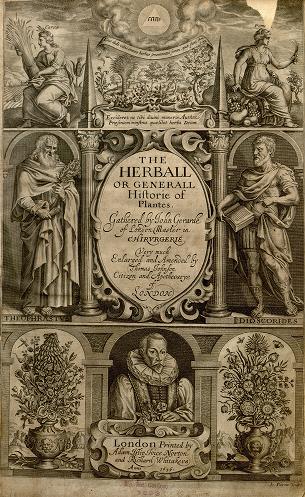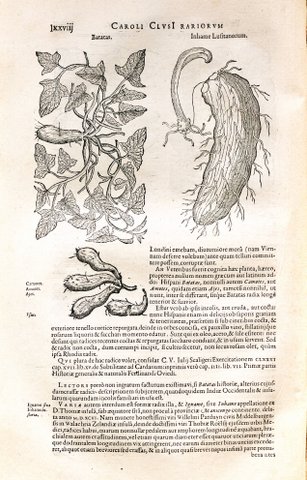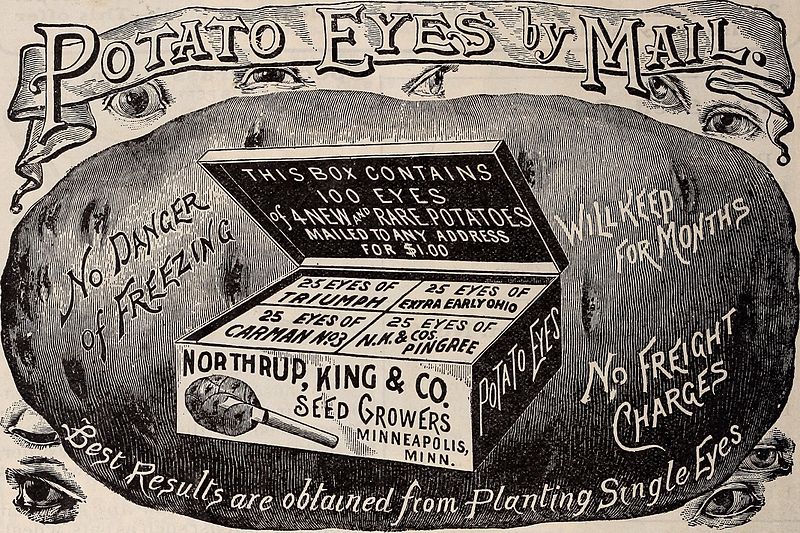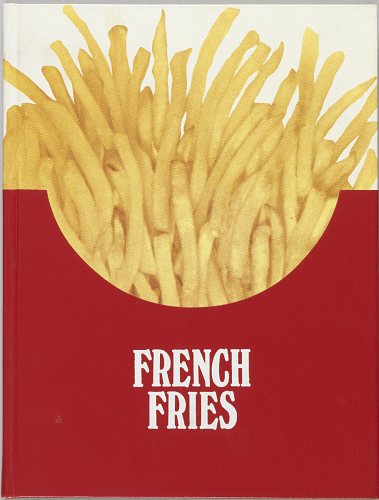The Smithsonian Institution is made up of 19 museums, research centers, and the National Zoo. Within each of those museums are multiple departments and units, each overseeing research, collections management, visitor experience, and more. So, while most people see us as one large institution, the reality is that “The Smithsonian” is a rather complex system of different units, staff, and collections, all working together while also fulfilling their individual goals.
 |
| Smithsonian Castle, 1885-1910, 2010.0080.02, photographed by Walter J. Hussey, National Museum of American History |
One example of this complex web of units, is the large system of archives that exist within the Smithsonian. Currently, our institution is home to 16 different archival repositories, with different missions, collecting policies, and holdings. Their collections document history, culture, science, music (and more!) from every continent on earth. In total, these impressively diverse and valuable collections measure over 156,000 cubic feet!
 |
| Capital Gallery Stacks, 2008, Smithsonian Institution Archives. |
Archival collections are kept because they provide documentary evidence of past events, created by those who lived it. These can also be referred to as primary sources; different from secondary sources—such as mass publications—in that archival materials are considered “rare”. They provide first-hand information or data from participants and witnesses in history. Because of the rarity of archival collections, these materials are non-circulating, meaning you can’t take them home with you.
Researchers interested in seeing archival materials must go to a research room and work with staff to request the item they’d like to see. This isn’t meant to dissuade visits, but simply serves to protect these fragile collections. Alternatively, many libraries’ holdings can be borrowed by patrons, since they often contain secondary sources that are mass-produced. (Libraries can also hold special collections of rare books or other historic, unique materials—but we’ll cover that at another time.)
 |
Community researchers from the Isle de Jean Charles, Louisiana work to match archival records with collections objects in the NMAI Archives Center in October 2017. Left to right: Boyo Billiot, Nathan Sowry, Chantel Comardelle.
Photo: Judith Andrews |
Why are there so many Smithsonian archives, what are they, and what do they all hold? The different archival repositories around the Smithsonian were founded at various times throughout the Institution’s history in order to gain physical and intellectual control over different aspects of our work. Because of this, each archive preserves and facilitates access to historical records related to their unit’s mission and history. Together we hold the comprehensive picture of the Smithsonian’s continuing research and mission. These archival materials may be photographs, negatives, correspondence, artwork, diaries, manuscripts, field books, professional and personal papers, and audio-visual materials, but all are permanently valuable records of people, activities, government, or organizations.
 |
| Breath of Life Community Research Visit, National Anthropological Archives, 2017. |
Most archives at the Smithsonian are part of a larger museum or department, and hold materials that document that unit’s work. These various archival repositories—along with their missions and a summary of their collections—are:
Air and Space Museum Archives
The National Air and Space Museum Archives collects materials documenting the history of air and space flight. Their archival collection contains approximately 12,000 cubic feet of material, including an estimated 2 million photographs, 700,000 feet of motion picture film, and 2 million technical drawings.
Anacostia Community Museum Archives
The Anacostia Community Museum Archives collects, preserves, and makes available materials supporting the object-based collection and the research and educational activities of the museum, as well as the museum's mission. Collections include personal papers, exhibition records, over 50,000 photograph collections, and more than 200 volumes of books dating from the nineteenth century to the present.
Archives Center, National Museum of American History
The Archives Center supports the National Museum of American History by collecting, preserving, and providing access to archival documents that complement the museum's exhibition, research, and collecting programs. The Archives Center holds more than 1,400 collections documenting the history of technology, invention and innovation, business and consumer culture, American music, and popular culture as well as many other topics.
Archives of American Gardens
The Archives of American Gardens, part of Smithsonian Gardens, collects, preserves, and provides access to photographic images and records documenting the evolution of gardens and landscapes throughout the United States. As of 2017, its holdings include over 100,000 images and supplemental files across over forty collections.
Eliot Elisofon Photographic Archives
The Archives, within the National Museum of African Art, are devoted to the collection, preservation and dissemination of visual materials that encourage and support the study of the arts, cultures and history of Africa. The collections contain approximately 450,000 items, including rare collections of glass plate negatives, lantern slides, stereographs, postcards, maps and engravings.
Freer Sackler Archives
The Freer Sackler Archives is a manuscript and photograph repository dedicated to furthering the study of Asian and Middle Eastern art and culture, as well as turn-of-the-century American art. It collects, preserves, and makes available documentary materials supporting the holdings and research activities of the Freer and Sackler galleries. The archives holds more than 160 collections—amounting to over one thousand linear feet of materials—dating from the early nineteenth century to the present.
Hirshhorn Museum and Sculpture Garden Collection Archive and Special Collections
Maintained by the Curatorial Department of the Hirshhorn Museum and Sculpture Garden, this archive includes research files on the entire permanent collection, emphasizing provenance, exhibition histories, published references, and comparative works. Records of more than 11,500 objects include photographs, official documents, research notes, correspondence, and copies of reference materials assembled by the staff.
Human Studies Film Archives
Within the Department of Anthropology, the National Museum of Natural History (and a sister unit of the National Anthropological Archives), the HSFA is devoted to preserving, documenting, and providing access to anthropological moving image materials. Collections comprise more than eight million feet of film (3,000 hours) and one thousand hours of video recordings. These visual research resources, along with related documentary materials, encompass a broad range of genres that span most of the 20th century.
Nam June Paik Archive
The Nam June Paik Archive, within the Smithsonian American Art Museum, includes written and object materials created by artist Nam June Paik. Among the most influential and prolific video artists, Paik had a profound impact on late twentieth century art through his transformation of the electronic moving image into an artist’s medium. The collection includes early writings from Paik, along with postcards, telegrams, faxes, programs for exhibitions, performances, and festivals, and various objects related to the early history of television and radio.
National Anthropological Archives
Within the Department of Anthropology, National Museum of Natural History (and a sister unit of the Human Studies Film Archive), the NAA collects and preserves historical and contemporary anthropological materials that document the world’s cultures and the history of anthropology. The collections include a wide variety of manuscript materials, photographs, maps, artwork, and sound recordings created by Smithsonian and non-Smithsonian anthropologists, Native peoples, scholars, and researchers. The NAA holds one of the world’s largest and richest archival collections related to North American archeology and ethnography, indigenous artwork, and historical photographs.
National Museum of African American History and Culture Library and Archives
The National Museum of African American History & Culture (NMAAHC) Library and Archives are devoted to collecting and providing access to resources that support scholarship in African American history, culture, and the African Diaspora. As the newest addition to the family of Smithsonian museums, NMAAHC is still currently building its archival and library collections.
Archive Center, National Museum of American Indian
The Archive Center at the National Museum of the American Indian actively acquires and serves as a repository for the records of contemporary Native American artists, writers, activists, and organizations. In addition, the Archive Center holds the records of the NMAI’s predecessor institution, the Museum of the American Indian (MAI), Heye Foundation. The Archive Center supports the mission of the museum by collecting, organizing, preserving, and making available papers, records, photographs, recordings, and ephemera that reflect the historical and contemporary lives of Native peoples throughout the Western Hemisphere. Collections include 1,500 linear feet of manuscripts and thousands of photographic objects.
Photograph Archives, American Art Museum
Maintained as part of the Smithsonian American Art Museum, the Photograph Archives contain nearly a half million negatives, photographs, and slides, that document American art from the colonial period to the present.
Ralph Rinzler Folklife Archives and Collections
Part of the Center for Folklife and Cultural Heritage, the Folklife Archives- named for the founding director of the Smithsonian Folklife Festival – includes collections covering world ethnic performance traditions, spoken word recordings, sounds of science and nature, occupational folklore, and family folklore. The collections are strong in American, and more specifically Euro-American, African-American, Caribbean, and Native American musical and performance traditions.
Two of the Smithsonian’s archival repositories—the Smithsonian Institution Archives and the Archives of American Art—are independent collecting units, meaning they are not a part of a Smithsonian museum, or department.
Smithsonian Institution Archives
The Smithsonian Institution Archives captures, preserves, and shares with the public the history of this extraordinary Institution through collection and documentation of the Smithsonian’s official records. Its collections include administrative and exhibition records, personal and professional papers of Smithsonian staff and collaborators, scientific expedition field books, correspondence, diaries, and much more. Because of SIA’s mission to collect institutional records, many of their holdings overlap with, or relate to, other archival repositories listed above.
Archives of American Art
The Archives of American Art is the world’s preeminent and most widely used research center dedicated to collecting, preserving, and providing access to primary sources that document the history of the visual arts in America. Founded in Detroit in 1954 to serve as microfilm repository; this mission expanded quickly to collecting and preserving original material. In 1970, the AAA joined the Smithsonian. Their collections consist of more than 20 million letters, diaries, scrapbooks, manuscripts, financial records, photographs, films, and audiovisual recordings of artists, dealers, collectors, critics, scholars, museums, galleries, associations, and other art world figures.

Want to dive deeper and learn more about the collections within each archive at the Smithsonian? Click on any of the linked repository names above, or explore digitized and catalogued archival items online through the Smithsonian’s database for ALL of our collections -- Collections Search Center. You can browse by individual archival repository by choosing a unit name from the “catalog record source” tab.
You can also directly help us make many of these archival collections more accessible, by transcribing and reviewing digitized materials in the Smithsonian Transcription Center! There are currently ongoing projects from the National Anthropological Archives, Smithsonian Institution Archives, National Air and Space Museum Archives, and more! Reach out anytime to
transcribe@si.edu with questions.
Caitlin Haynes, Coordinator
Smithsonian Transcription Center



































